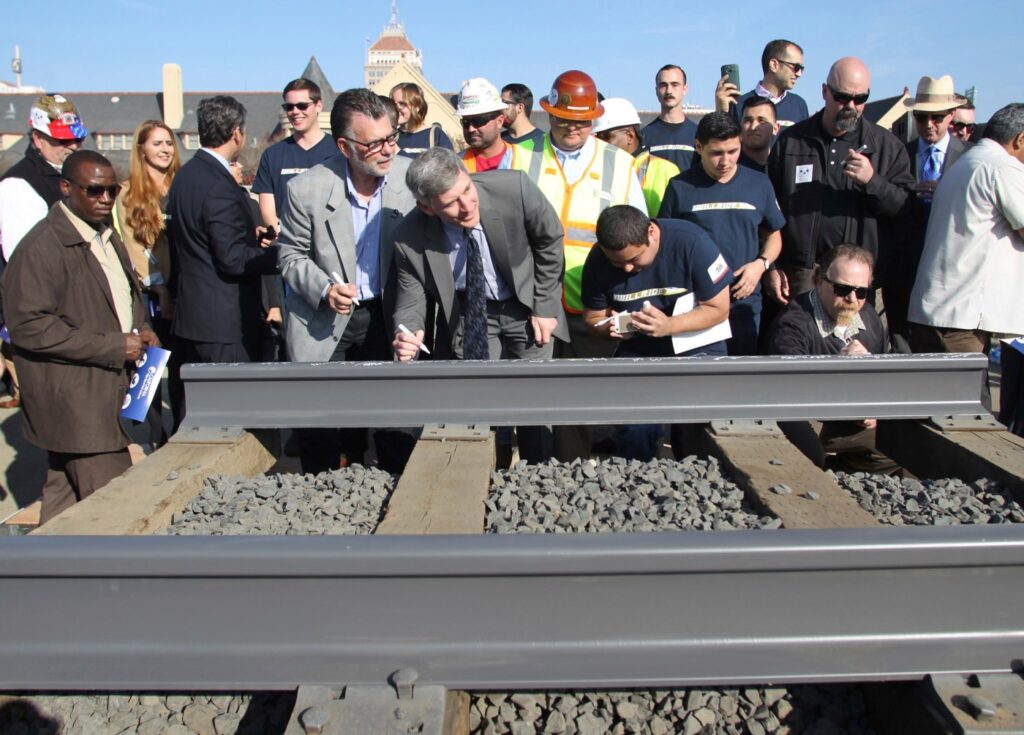
California voters were sold a lemon when they were pitched with the idea of a bullet train running at speeds of up to 220 miles per hour that would take passengers from San Francisco to Los Angeles in under three hours.
Democratic legislators and stakeholders put Proposition 1A on the November 2008 ballot, and voters passed the $9.95 billion bond measure with little to no details about how this would actually be accomplished or who would be footing the bill. The original $9.95 billion bond was merely the seed money.
Sixteen years later, the high-speed rail train is still nowhere near completion, and current estimates for building the entire system have ballooned to $128 billion. It’s clear that taxpayers seem to be the only ones footing this bill.
Yet, Democratic legislators still hope to turn this lemon into lemonade.
President Biden threw California’s Democratic legislators a bone this year with a gift of $3.1 billion in federal funding. But even that won’t fill the black hole of this money pit. The state has already squandered $11.6 billion in taxpayer money on this rail boondoggle that will never be what originally was promised.
As it does every year in March, the High-Speed Rail Authority (HSRA) released its draft business blueprint. At a recent legislative informational hearing, HSRA officials stated another $100 billion is needed before connecting riders across the state, but they have no formal plan as to how and from where they will raise that money.
California’s finances are in a perilous state. Thanks to routine and consistent overspending and overpromising by Governor Newsom and his fellow Democratic legislators, the state faces a historic deficit north of $73 billion and growing. The governor and the legislature will have to prioritize vital programs for Californians. This is not the time to double down on the most expensive boondoggle in state history.
Despite the promise of high-speed rail, this project has turned into a fiscal quagmire. It has gone wildly over-budget, is decades overdue, and continues to under-deliver. The cost overruns and lack of accountability is simply unacceptable.
Today, we are four years beyond when the state’s high-speed rail system was supposed to be operational, and we don’t have anything close to a functioning, safe, convenient, and affordable rail system. Let that sink in.
Related Articles
Lessons learned from the coronavirus pandemic
Did we learn from the pandemic years?
Learning from the many mistakes of COVID, we can and should be better prepared for the next pandemic
John Moorlach: Newsom’s approach to COVID is a blueprint of what not to do next time
We told you so about ill effects of the COVID response
So where do we go from here? The High Speed Rail Peer Review Group has a very prudent recommendation in their recent letter to the Legislature: “. . . we suggest the Legislature might want to commission an independent review of the economic and financial justification for the project, including the ability to operate without subsidy as required by Proposition 1A, before recommitting to the full Phase I system. We continue to urge that this be done.” (Emphasis is theirs.)
The cost of this project has ballooned from the original $33 billion to at least – at last estimate – $128 billion and rising. The HSRA told lawmakers that more revenue is needed to just complete the initial 171-mile track connecting three cities in the Central Valley, which was billed as the more affordable portion to complete. As the cost of this project continues to grow, so do the questions about how the state can possibly afford this project and if it will ever be completed.
It’s time to hit the brakes on the folly trolley and accept the wise advice of the Peer Review Group.
Roger Niello represents California Senate District 6, which covers portions of Placer and Sacramento Counties and all of Sutter and Yuba Counties.
